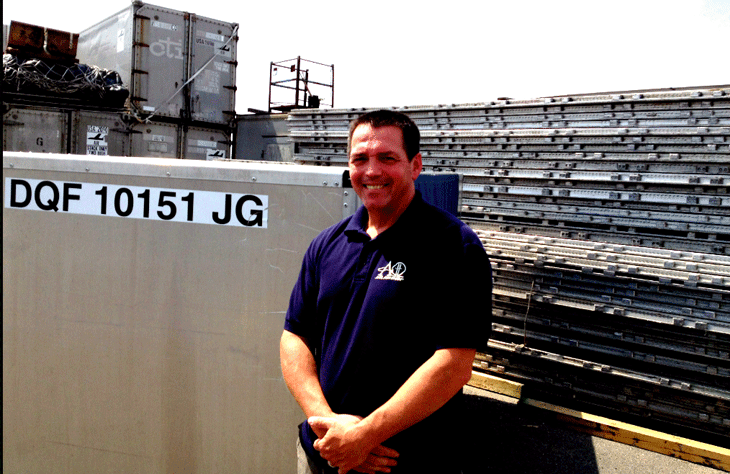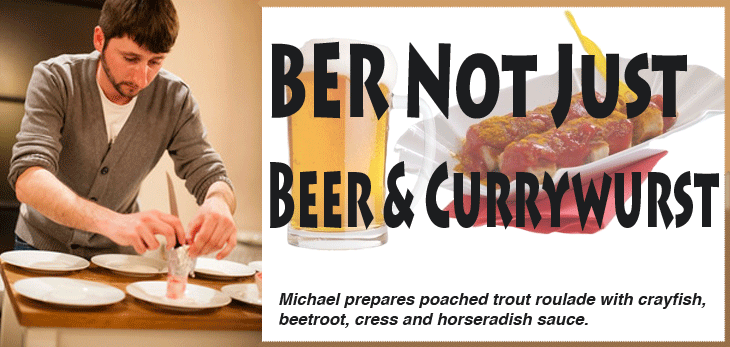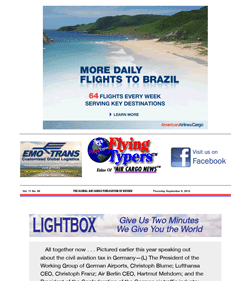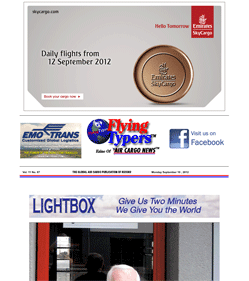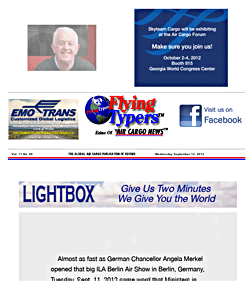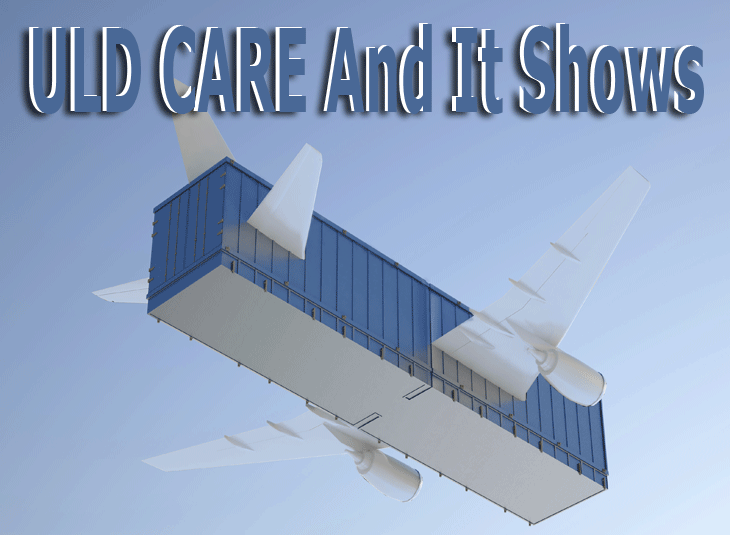
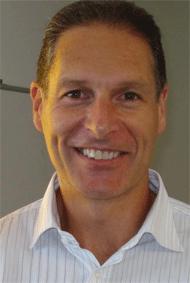 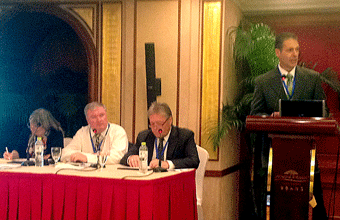 James
Everett (left) and speaking
at podium with from
left to right Louise
Ladouceur, secretary,
Chairman Dick O'Marra
and vice chair Urs Wiesendanger. James
Everett (left) and speaking
at podium with from
left to right Louise
Ladouceur, secretary,
Chairman Dick O'Marra
and vice chair Urs Wiesendanger.
(Shanghai Exclusive)—As
the 25th Annual General
Meeting (AGM) and Conference
ULD CARE got down to
business this week in
Shanghai, CHEP’s
James Everett (left)
presented a prototype
mobile application for
ULD CARE, with the aim
of providing a single,
user-friendly global
interface, portability,
ease of use, real time
recording, message error
reduction and, as such,
a paperless system—things
all desired, but lacking
in the industry.
To
put it in perspective,
there are currently
a reported 1.2 billion
mobile app users in
the world—in China
alone, there are 430
million mobile users.
Fifteen thousand apps
have been developed
per week since July
2008. However, once
downloaded, one in four
mobile apps are never
used again.
Potential
functions James demonstrated
for the mobile phone
app included ‘Bounty
Hunter,’ offering
a reward for bringing
in lost ULDs, perhaps
on the basis of a multilateral
agreement that would
go into the IULDUG centralized
database and pay $10
USD per unit. Another
was ‘PMC diagram’
for pallet damage limits
and UCS ‘Move
Me’ (ULD Control
Message). Transactions
would comply with IATA
standards, damage limits
and ODLN codes (operational
damage limits notice),
and direct access to
Part 145. James demonstrated
several of these pilots
on his iPhone. Such
an app could generate
revenue for the ULD
CARE group without any
need for the airlines
to develop an interface,
with the potential to
charge transaction fees
while solving industry
problems. The cost to
develop the pilot was
$700 USD and the proposal
to take it to full development
will be put to the board
for decision; a complete
business case and how
to market it will be
presented.
James
Everett also showcased
the CHEP ULD damage
control solution, which
uses the IATA ODLN to
report ULD damage statistics.
Additional codes are
used to identify specific
damage to a unit and
all its parts, and a
tablet with the ULD
outline records it.
Actions are categorized
as "repair,”
"replacement,"
or "rework."
A
work order is subsequently
generated on the warehouse
floor and a photo of
the unit taken. The
part is then immediately
shipped to the location
as needed.
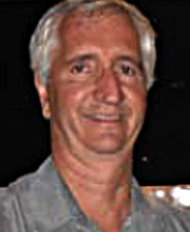 Bob
Rogers, (right) VP Industry
Affairs for Nordisk
Aviation Products and
a longtime proponent
of ULD management commented
that there is potential
to develop further applications
of these codes to record
and report any kind
of ULD damage including
a functionality that
could provide the airlines
the ability to automatically
block an unserviceable
unit from being loaded
onto the aircraft, and
even present it to the
regulatory authorities
something he suggested
the FAA and other agencies
would embrace. Bob
Rogers, (right) VP Industry
Affairs for Nordisk
Aviation Products and
a longtime proponent
of ULD management commented
that there is potential
to develop further applications
of these codes to record
and report any kind
of ULD damage including
a functionality that
could provide the airlines
the ability to automatically
block an unserviceable
unit from being loaded
onto the aircraft, and
even present it to the
regulatory authorities
something he suggested
the FAA and other agencies
would embrace.
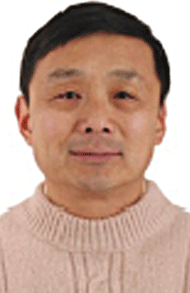 Elsewhere
earlier in the day Richard
“Dick” O'Marra,
ULD CARE President and
chairman of the board,
opened the conference
and introduced Liu Jia
Wei, (left) director
CAAC, who delivered
the welcome address,
which was translated
by Li Ruilin, safety
& cargo head, China
Air Transport Association. Elsewhere
earlier in the day Richard
“Dick” O'Marra,
ULD CARE President and
chairman of the board,
opened the conference
and introduced Liu Jia
Wei, (left) director
CAAC, who delivered
the welcome address,
which was translated
by Li Ruilin, safety
& cargo head, China
Air Transport Association.
Mr.
Wei was followed by
Ian Kentfield, president
of AmSafe Bridport,
fellow host of this
conference.
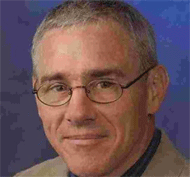 Ian
(right) encouraged the
Chinese delegates and
guests to participate
in the discussions and
noted there were sufficient
people on hand to translate
to Mandarin, expressing
understanding for the
difficulties with meetings
conducted in another
language. Ian
(right) encouraged the
Chinese delegates and
guests to participate
in the discussions and
noted there were sufficient
people on hand to translate
to Mandarin, expressing
understanding for the
difficulties with meetings
conducted in another
language.
Urs
Wiesendanger, ULD CARE
vice chair noted that
this was also the first
meeting with open and
free seating, without
segregation of airline
and non-airline members
and with attendance
to separate and joint
sessions.
Forty-one
airlines, fifty-three
non-airlines, seven
industry guests, and
thirteen partner program
participants are present
at this year's conference.
Louise
Ladouceur ULD Care Secretary
commented that at the
end of 2011 there was
$10,000 USD left in
the IULDUG budget, which
is indicative of the
challenges to operate
with such limited funding.
She went on to say that
the IULDUG control system
transactions fees would
remain unchanged going
forward. The subject
of updating the value
of special units, especially
temperature controled
ULDs, as compared to
other units was mentioned
as a reality that requires
further attention from
the group.
The
new organization was
reviewed, with the board
consisting of delegates
from AA, UA, KL, EY,
KZ, and OZ as airline
members, and CHEP (James
Everett), AmSafe (Andy
Davies) and Nordisk
(Bob Rogers) as non-airline
members.
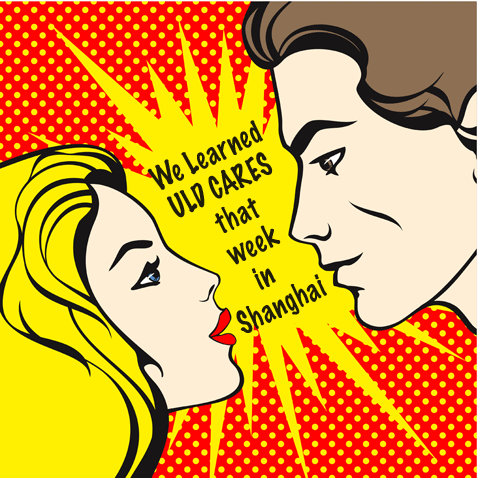 Urs
explained the migration
name change from the
IULDUG to ULD CARE,
with IULDUG retained
as the name of its software
control system. New
members that joined
the group were announced:
airlines TAM and SAA
and 3 non-airline members—Base
Plastics (USA), TRIP
& Co., and FireTrace
(fire suppression systems).
Louise also mentioned
her efforts concerning
the airport survey presented
at the Miami conference
and the follow up she
attempted with ACI in
order to obtain their
feedback. Urs
explained the migration
name change from the
IULDUG to ULD CARE,
with IULDUG retained
as the name of its software
control system. New
members that joined
the group were announced:
airlines TAM and SAA
and 3 non-airline members—Base
Plastics (USA), TRIP
& Co., and FireTrace
(fire suppression systems).
Louise also mentioned
her efforts concerning
the airport survey presented
at the Miami conference
and the follow up she
attempted with ACI in
order to obtain their
feedback.
This
turned out to be a more
challenging task; however,
ACI has subsequently
agreed to allocate 20
minutes for a ULD CARE
presentation at their
future meeting in Cape
Town.
As
the day moved into afternoon
a major agenda topic
was U-MAP, introduced
at the 2011 conference,
the user group's Master
Action Plan, designed
to provide a detailed
plan itemizing issues,
priorities, time lines,
status, cost, and implementation,
and serve as the basis
for quality measurement
using KPI (key performance
indicators). It is the
mechanism to manage
the transition of the
IULDUG to the ULD CARE
group reviewing the
organization, IULDUG
(multilateral ULD control
system), and ULD CARE
respectively.
Louise
introduced the web-based
IULDUG system, which
complements carriers'
in-house tracking systems
and processes ULD movements
in real time—up
to 60,000 interline
transfer transactions
annually.
The
UCR form provides for
the insertion of condition
codes to denote whether
a unit is damaged, serviceable,
or unserviceable, together
with special codes—HHH
loan of an empty unit,
XXX transfer of an empty
unit (no free day),
and ZZZ for a courtesy
move. The system tracks
the length of time of
a transferred unit and
the respective actions.
System reports include
owner and foreign ULD
transactions, demurrage
receivables, demurrage
payables, and pending
demurrage payable.
The
reports can be converted
into Excel and PDF.
A customizable dashboard
allows for an easy way
to manage a carrier's
business in the system.
Airports could also
enter lost and found
ULD data, for which
the system would in
turn auto-generate a
corresponding message.
A
new ULD CARE membership
agreement for IULDUG
users will be forthcoming.
The four key components
of CARE are:
 Compliance
- ULD handling
(based on IATA
regulations),
ULD storage, ULD
training, and
IULDUG asset transfer
protocol. Additionally,
compliance with
weight & balance
manuals, the creation
of an arbitration
committee for
compliance as
a mechanism to
solve disputes
that may arise,
and awards and
recognition round
off this aspect. Compliance
- ULD handling
(based on IATA
regulations),
ULD storage, ULD
training, and
IULDUG asset transfer
protocol. Additionally,
compliance with
weight & balance
manuals, the creation
of an arbitration
committee for
compliance as
a mechanism to
solve disputes
that may arise,
and awards and
recognition round
off this aspect.
 Airworthiness
- flight safety,
CMM/ODLN-based
ULD inspection
at asset transfers,
adherence to certified
ULD repair requirements,
expanded ULD content
in industry audits
and monitoring
participants’
industry audit
reports.
Airworthiness
- flight safety,
CMM/ODLN-based
ULD inspection
at asset transfers,
adherence to certified
ULD repair requirements,
expanded ULD content
in industry audits
and monitoring
participants’
industry audit
reports.
 Regulations –
the defined, cost-free
period for transferred
ULD, daily demurrage
fee per ULD type,
and a defined
maximum cost of
units that have
not been returned.
Enhanced engagement
with civil aviation
authorities and
assistance in
the creation of
ULD regulations.
Regulations –
the defined, cost-free
period for transferred
ULD, daily demurrage
fee per ULD type,
and a defined
maximum cost of
units that have
not been returned.
Enhanced engagement
with civil aviation
authorities and
assistance in
the creation of
ULD regulations.
 Education - asset
transfer protocol
(former ULD control
manual), training,
networking, best-demonstrated
practice sharing,
KPI sharing, ULD
CARE events, and
presence at industry
events.
Education - asset
transfer protocol
(former ULD control
manual), training,
networking, best-demonstrated
practice sharing,
KPI sharing, ULD
CARE events, and
presence at industry
events.
|
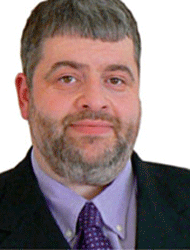 Going forward, the list
of further U-MAP "setting
up for success"
steps will include tracking
system upgrades to reflect
current technology,
a mobile compatible
public website, and
focus on specialized
containers, while involving
all the industry stakeholders,
from shipper to consignee
and everyone in between.
Going forward, the list
of further U-MAP "setting
up for success"
steps will include tracking
system upgrades to reflect
current technology,
a mobile compatible
public website, and
focus on specialized
containers, while involving
all the industry stakeholders,
from shipper to consignee
and everyone in between.
An important aspect
of the ULD Safe presentation
was Andy Davies, AmSafe,
providing an SAE update
and covered a revision
to certified lower deck
containers, a new fire
containment cover, a
new regulation for temperature-controlled
containers, and a revision
concerning interline
pallets.
Next SAE meetings are
scheduled for October
8-10 in San Francisco
and April 8-10, 2013,
in Amsterdam.
Jonathan Neeld (left)
of CSafe LLC spoke about
the new TSO (technical
standard orders, a minimum
performance standard
the US FAA issues for
specified materials,
parts processes, and
appliances used on civil
aircraft) for temperature-controlled
containers under development,
by looking first at
container types (aircraft
temperature-controlled
and non-aircraft temperature-controlled
containers) and system
types (active, stored
energy, and ground active).
Ted
|



 The
menu included a sorrel
soup of garden vegetables,
seafood salad with
fennel and croutons,
plus my special poached
trout roulade with
crayfish beetroot
and horseradish sauce.
The
menu included a sorrel
soup of garden vegetables,
seafood salad with
fennel and croutons,
plus my special poached
trout roulade with
crayfish beetroot
and horseradish sauce.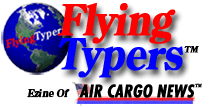

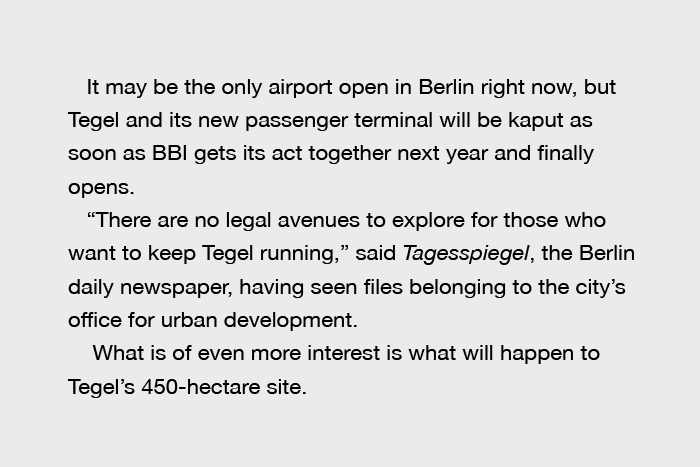


 James
Everett (left) and speaking
at podium with from
left to right Louise
Ladouceur, secretary,
Chairman Dick O'Marra
and vice chair Urs Wiesendanger.
James
Everett (left) and speaking
at podium with from
left to right Louise
Ladouceur, secretary,
Chairman Dick O'Marra
and vice chair Urs Wiesendanger. Bob
Rogers, (right) VP Industry
Affairs for Nordisk
Aviation Products and
a longtime proponent
of ULD management commented
that there is potential
to develop further applications
of these codes to record
and report any kind
of ULD damage including
a functionality that
could provide the airlines
the ability to automatically
block an unserviceable
unit from being loaded
onto the aircraft, and
even present it to the
regulatory authorities
something he suggested
the FAA and other agencies
would embrace.
Bob
Rogers, (right) VP Industry
Affairs for Nordisk
Aviation Products and
a longtime proponent
of ULD management commented
that there is potential
to develop further applications
of these codes to record
and report any kind
of ULD damage including
a functionality that
could provide the airlines
the ability to automatically
block an unserviceable
unit from being loaded
onto the aircraft, and
even present it to the
regulatory authorities
something he suggested
the FAA and other agencies
would embrace. Elsewhere
earlier in the day Richard
“Dick” O'Marra,
ULD CARE President and
chairman of the board,
opened the conference
and introduced Liu Jia
Wei, (left) director
CAAC, who delivered
the welcome address,
which was translated
by Li Ruilin, safety
& cargo head, China
Air Transport Association.
Elsewhere
earlier in the day Richard
“Dick” O'Marra,
ULD CARE President and
chairman of the board,
opened the conference
and introduced Liu Jia
Wei, (left) director
CAAC, who delivered
the welcome address,
which was translated
by Li Ruilin, safety
& cargo head, China
Air Transport Association. Ian
(right) encouraged the
Chinese delegates and
guests to participate
in the discussions and
noted there were sufficient
people on hand to translate
to Mandarin, expressing
understanding for the
difficulties with meetings
conducted in another
language.
Ian
(right) encouraged the
Chinese delegates and
guests to participate
in the discussions and
noted there were sufficient
people on hand to translate
to Mandarin, expressing
understanding for the
difficulties with meetings
conducted in another
language. Urs
explained the migration
name change from the
IULDUG to ULD CARE,
with IULDUG retained
as the name of its software
control system. New
members that joined
the group were announced:
airlines TAM and SAA
and 3 non-airline members—Base
Plastics (USA), TRIP
& Co., and FireTrace
(fire suppression systems).
Louise also mentioned
her efforts concerning
the airport survey presented
at the Miami conference
and the follow up she
attempted with ACI in
order to obtain their
feedback.
Urs
explained the migration
name change from the
IULDUG to ULD CARE,
with IULDUG retained
as the name of its software
control system. New
members that joined
the group were announced:
airlines TAM and SAA
and 3 non-airline members—Base
Plastics (USA), TRIP
& Co., and FireTrace
(fire suppression systems).
Louise also mentioned
her efforts concerning
the airport survey presented
at the Miami conference
and the follow up she
attempted with ACI in
order to obtain their
feedback.  Compliance
- ULD handling
(based on IATA
regulations),
ULD storage, ULD
training, and
IULDUG asset transfer
protocol. Additionally,
compliance with
weight & balance
manuals, the creation
of an arbitration
committee for
compliance as
a mechanism to
solve disputes
that may arise,
and awards and
recognition round
off this aspect.
Compliance
- ULD handling
(based on IATA
regulations),
ULD storage, ULD
training, and
IULDUG asset transfer
protocol. Additionally,
compliance with
weight & balance
manuals, the creation
of an arbitration
committee for
compliance as
a mechanism to
solve disputes
that may arise,
and awards and
recognition round
off this aspect. Going forward, the list
of further U-MAP "setting
up for success"
steps will include tracking
system upgrades to reflect
current technology,
a mobile compatible
public website, and
focus on specialized
containers, while involving
all the industry stakeholders,
from shipper to consignee
and everyone in between.
Going forward, the list
of further U-MAP "setting
up for success"
steps will include tracking
system upgrades to reflect
current technology,
a mobile compatible
public website, and
focus on specialized
containers, while involving
all the industry stakeholders,
from shipper to consignee
and everyone in between.
